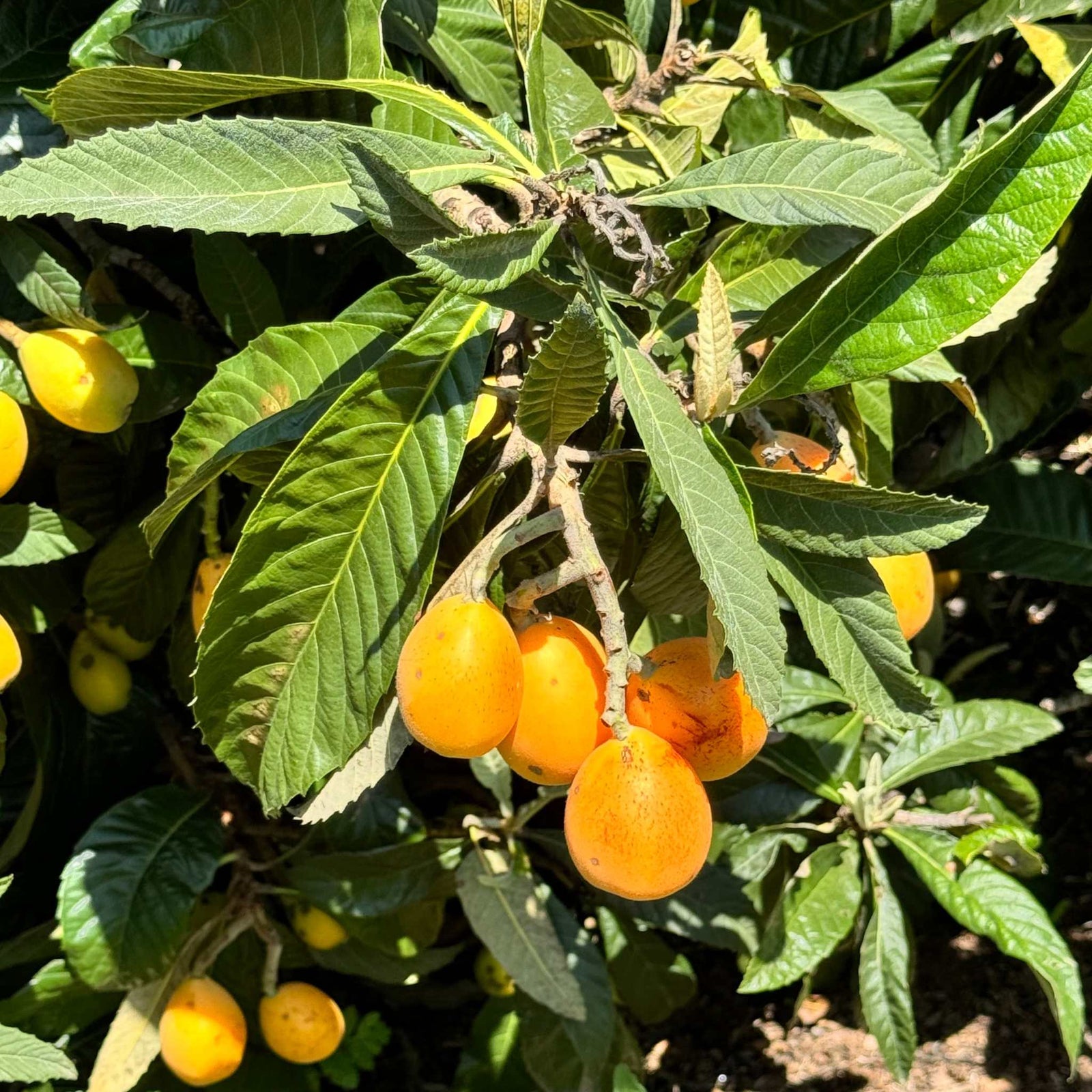With this article we would like to introduce you to the Japanese loquat
Every year in April, the orange fruits of the Japanese loquat shine out from the year-round dark green, shiny leaves on our Quinta.
Here in Portugal, the Japanese loquat tree is called "Nespereira-do-Japão," and the fruit is called Nespera . It is prized for its delicious fruits and attractive appearance and can be found in many gardens and public parks. The fruits are often enjoyed fresh or made into jams, jellies, and other treats. They are popular with the locals and are often considered part of Portuguese cuisine and culture.
In some cultures, they are also used to make liqueurs and spirits. Wine is also made from these loquats.
The loquat is an oval fruit, roughly the size of an apricot, with several relatively large brown seeds. These seeds are also easy to propagate, allowing you to grow a beautiful small tree for your balcony or conservatory. Since the loquat only thrives in temperate to subtropical climates, it unfortunately doesn't grow in gardens in northern Europe.
The ripe, juicy fruits are deliciously sweet to slightly sour and can be eaten with or without the skin. The skin is easy to peel off.
The Japanese loquat is native to southeast China and Japan, where it has been cultivated as a fruit tree for more than 1,000 years. In Japanese culture, the loquat also has symbolic significance. It is often associated with fertility, prosperity, and good luck and is therefore a popular gift for special occasions such as New Year's or weddings.
Tip:
Gourmets will go wild when they are served the Japanese loquat, which is first baked in the oven at 180°C for 15 minutes, then sprinkled with freshly roasted almonds and finally garnished with whipped cinnamon cream.
Recipes:
Delicious Japanese loquat jam:
Ingredients:
- 1 kg Japanese loquat
- 500 g sugar
- Juice of one lemon
- Optional: 1 vanilla pod or cinnamon stick for additional flavor
Directions:
-
Wash the loquats thoroughly under cold water. Remove the stems and seeds and cut the fruit into small pieces.
-
Place the prepared loquat pieces in a large pot and add the sugar and lemon juice. If you want to flavor the jam, add the vanilla pod or cinnamon stick at this time.
-
Cook the mixture over medium heat, stirring constantly, for about 20-25 minutes, until the fruit is soft and the jam thickens. Skim any foam from the surface during cooking.
-
Once the jam has reached the desired consistency, remove the pan from the heat and remove the vanilla pod or cinnamon stick, if using.
-
Let the jam cool slightly, then pour it into clean jars. Seal the jars tightly and store them in the refrigerator.
This Japanese loquat jam is delicious on toast, rolls or as a filling for cakes and pastries.
Refreshing Japanese Loquat Smoothie:
Ingredients:
- 1 cup loquat, seeded and diced
- 1 ripe banana, peeled and cut into pieces
- 1 cup Greek yogurt
- 1/2 cup almond milk (or other milk of your choice)
- 1 tablespoon honey or maple syrup (optional, depending on desired sweetness)
- A few ice cubes
Directions:
-
Place the diced loquats, banana pieces, Greek yogurt, almond milk, and honey or maple syrup in a blender.
-
Add some ice cubes to make the smoothie nice and cool and refreshing.
-
Blend all ingredients on high speed until completely smooth and evenly blended. If the smoothie is too thick, you can add more almond milk to achieve your desired consistency.
-
Once the smoothie has reached the desired consistency, pour it into glasses and serve immediately.
This loquat smoothie is a wonderfully refreshing drink, perfect for a hot day or as a healthy snack. The sweet, juicy loquat gives the smoothie a unique flavor, making it a delicious treat for young and old!



